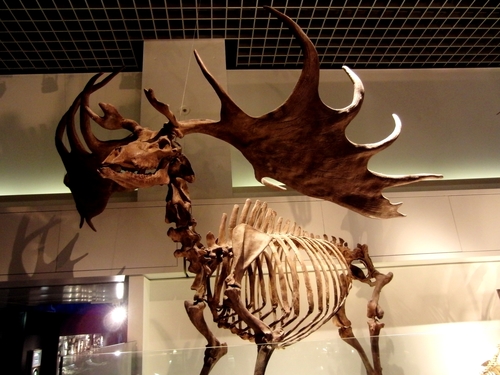
Irish Elk
The Irish Elk, famed for its colossal antlers, roamed Eurasia’s open woodlands eons ago. This majestic giant played a vital role in shaping its ecosystem, influencing vegetation and providing prey for predators. Its striking antlers remain a symbol of Pleistocene megafauna's grandeur and mystery.
598.74 - 698.53 kg
Weight
Length: 2.987 - 3.2 m; Height: 2.103 - 2.134 m
Size
Low
Aggression
Characteristics
Megaloceros giganteus, commonly known as the Irish Elk, was a large deer species known for its enormous antlers, which could span up to 12 feet. It inhabited open woodlands and grasslands across Eurasia during the Pleistocene epoch. Despite its name, it was not limited to Ireland nor closely related to modern elk.
Distribution Range of the Irish Elk
Megaloceros giganteus, commonly known as the Irish Elk, was native to Europe and parts of Asia. Fossils have been found across a wide area, including Ireland, where it is most famously known, as well as other parts of Western Europe, Central Europe, and as far east as Siberia.
Irish Elk's Habitat
Environmental Conditions
The Irish Elk inhabited a variety of environments that included open woodlands, grasslands, and steppe regions. During the Pleistocene epoch, these environments were characterized by cooler climates and expansive areas of open terrain.
Ecological Niche
Megaloceros giganteus was a large herbivore, adapted to grazing and browsing. Its large antlers suggest that it lived in open habitats where such displays could be used for mating rituals and possibly deterring predators. The varied diet and habitat suggest it occupied a niche similar to that of large deer species today, requiring ample space for feeding and movement.
Copyright @ Nature Style Limited. All Rights Reserved.
 English
English